 Shady Characters
Shady Characters
The Secret Life of Punctuation, Symbols
 Other Typographical Marks
Other Typographical Marks
Keith Houston

W. W. NORTON & COMPANY
New York London
For Leigh 
Contents
 Some years ago a friend recommended a book to me. The book was An Essay on Typography , written in 1931 by Eric Gill, one of Englands most famous modern typographers.1 Although it was both diminutive in size and short on actual instruction (Gill preferred polemic to practical advice), Essay was a joy to read, full of philosophical asides and painstakingly hand-cut illustrations. Most of all, though, my interest was piqued by a character resembling a reversed capital P that peppered the text at inscrutable intervals. What was this for? Why did it appear at the start of each paragraph, and between some sentences but not others?
Some years ago a friend recommended a book to me. The book was An Essay on Typography , written in 1931 by Eric Gill, one of Englands most famous modern typographers.1 Although it was both diminutive in size and short on actual instruction (Gill preferred polemic to practical advice), Essay was a joy to read, full of philosophical asides and painstakingly hand-cut illustrations. Most of all, though, my interest was piqued by a character resembling a reversed capital P that peppered the text at inscrutable intervals. What was this for? Why did it appear at the start of each paragraph, and between some sentences but not others?
I hunted down the symbol in my copy of the Typographic Desk Reference , though its perfunctory definition was less than satisfying. As it explained, this character was called the pilcrow and once upon a time it had been used to separate paragraphs:
pilcrow
An old mark, rarely in use today, representing the beginning of a paragraph or section. Today it is used as an invisible character in word processing applications to represent a paragraph break. Also called blind P , reverse P or paragraph mark. 2
This curt description invited more questions than it answered. I started to notice the same mark in other places: websites, glossaries of other typographic reference works, and even computer applications such as Microsoft Word.
How did the pilcrows curious reverse-P form come about? Was it related to the letter P, as the TDR seemed to suggest, or was it something more subtle? What were the roots of its pithy, half-familiar name? What had caused this old mark to fall out of use, and having done just that, why did Eric Gill see fit to place it seemingly at random in his only published work on typography?
What, in other words, was the pilcrow all about?
A web search yielded a list of books to read and sites to browse. Once Id finished with those, I had a heaping pile of notes and a list of yet more sources to be investigated. The story of this one character took in the birth of punctuation, the ancient Greeks, the coming of Christianity, Charlemagne, medieval writing, and Englands greatest twentieth-century typographer. I started to research other marksnot only those, like the pilcrow, that hovered on the margins, but also everyday characters such as the dash (), the ampersand ( & ), and the asterisk ( * ). An ever more diverse set of episodes, actors, and artifacts emerged: the creation of the Internet; ancient Roman graffiti; the Renaissance; Cold War double agents, and Madison Avenue at the peak of its powers. Their stories described a fascinating trail across the parallel histories of language and typography.
In February 2009, my meandering note-taking and browsing snapped sharply into focus. While investigating a symbol called the interrobang ( ), a hybrid question mark/exclamation point created in the 1960s, I came across a website dedicated to the symbol at www.interrobang-mks.com. At first sight it seemed unremarkablea single page bearing a picture of the interrobang and a few paragraphs relating its storybut at the bottom was an e-mail address for one PennSpec. Without much thought, I dashed off a message asking whether PennSpec happened to know anything more about the character, and promptly moved on to other things.
), a hybrid question mark/exclamation point created in the 1960s, I came across a website dedicated to the symbol at www.interrobang-mks.com. At first sight it seemed unremarkablea single page bearing a picture of the interrobang and a few paragraphs relating its storybut at the bottom was an e-mail address for one PennSpec. Without much thought, I dashed off a message asking whether PennSpec happened to know anything more about the character, and promptly moved on to other things.
The penny dropped the next day. The mks in interrobang-mks.com must surely refer to Martin K. Speckter, the interrobangs creator; PennSpec, who habitually sent her e-mails without a signature, had to be Martins widow, Penny. I was astonished: I was corresponding with the wife of the man who had invented one of the first new marks of punctuation for decades, if not centuries. The story of the interrobang was suddenly a living, breathing piece of history.
Emboldened, I sought out other people involved in the world of unconventional punctuation, and more conversations followed. I talked on the telephone to Josh Greenman, a New York journalist who had invented a sarcasm mark, and to Paul Saenger, an expert on spaces between wordsinvisible punctuation, if you will. I corresponded with Bas Jacobs, the Dutch designer of an irony mark for the type foundry Underware; with Doug Kerr, the AT&T engineer responsible for the appearance of the hash mark ( # ) on telephone keypads; and with William H. Sherman, the worlds foremost authority on the manicule, or pointing hand ( ), who helped me out of an etymological dead end.
), who helped me out of an etymological dead end.
These typographic conundrums, these shady characters hiding in plain sight, were too good to be passed over like so many periods and commas. This book is here to bring them into the light of day, and I can only hope to do justice to Penny Speckter and all the others who have helped me on the way here.
 Theres no wrong way to read this book, but be aware that later chapters occasionally use terms explained earlier in the book. Where possible, cross-references have been added to help guide readers who jump straight in to a particular chapter.
Theres no wrong way to read this book, but be aware that later chapters occasionally use terms explained earlier in the book. Where possible, cross-references have been added to help guide readers who jump straight in to a particular chapter.

T his is a pilcrow: . They crop up with surprising frequency, dotted about websites with a typographic bent, for instance, or teaming up with the section symbol in legal documents to form picturesque arrangements such as 3, 7. The pilcrow also appears in Microsoft Word, where it adorns a button that reveals hidden characters such as spaces and carriage returns.
For all this quiet ubiquity, the pilcrow gets short shrift in books on typography and punctuation. Take the trouble to look it up and in most cases the humble pilcrow warrants only a few lines, dismissed briskly as a paragraph mark that is only appropriate when brevity is important.1 More generous definitions might run to mentioning that it has fallen out of common use and that it is sometimes used to indicate a footnote.2 No mention of where its reverse-P shape comes from, or its name; for the pilcrow, this is as good as it gets.
This is a crying shame. The pilcrow is not a mere typographic curiosity, useful only for livening up a coffee-table book on graphic design or pointing the way to a paragraph in a mortgage deed, but a living character with its roots in the earliest days of punctuation. Born in ancient Rome, refined in medieval scriptoria, appropriated by Englands most controversial modern typographer, and finally rehabilitated by the personal computer, the pilcrow is intertwined with the evolution of modern writing. It is the quintessential shady character.
* * *
T he orthographic world of ancient Greece was a sparse old place. When reading a contemporary manuscript, a literate Greek of Homers time would be faced with an UNBROKENSTREAMOFLETTERS, all uppercase (because at that time there was no other case), with lines running alternately left-to-right and then right-to-left across the page in the boustrophedon, or ox-turning, style, after a farmer driving his oxen across a field.3 Perhaps most cruelly, the visual signposts of punctuation that today we take for granted were completely absent. It was the readers unenviable lot to tease out words, clauses, and even sentences from this densely packed zigzag of characters.
Next page
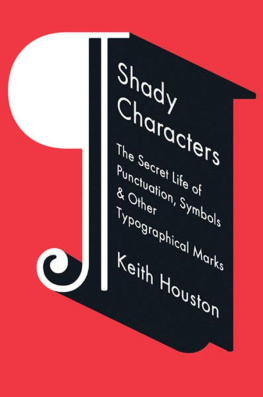
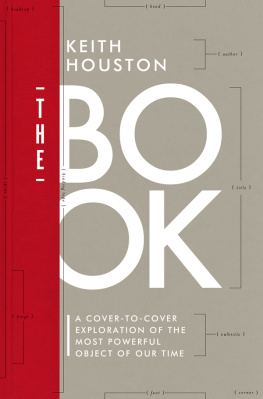
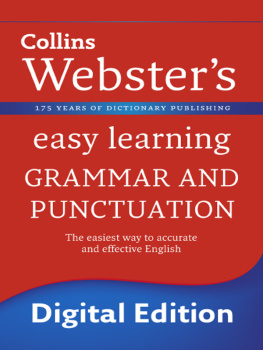

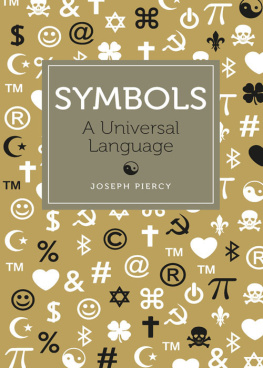
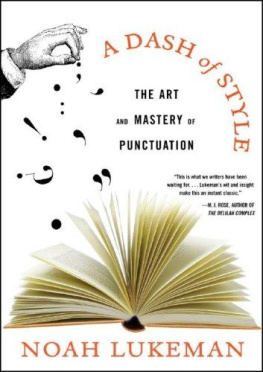
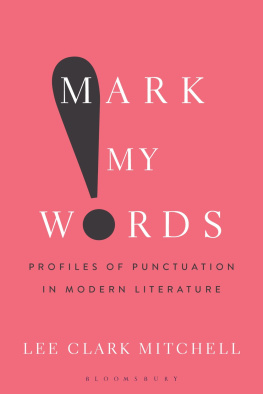
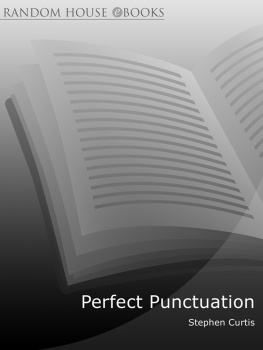

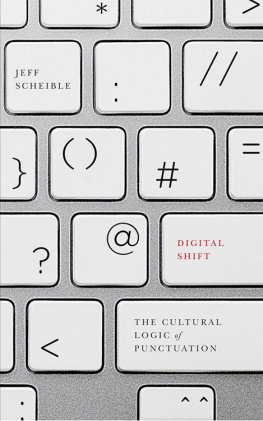
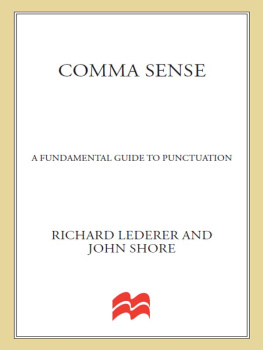
 Shady Characters
Shady Characters Other Typographical Marks
Other Typographical Marks

 Some years ago a friend recommended a book to me. The book was An Essay on Typography , written in 1931 by Eric Gill, one of Englands most famous modern typographers.1 Although it was both diminutive in size and short on actual instruction (Gill preferred polemic to practical advice), Essay was a joy to read, full of philosophical asides and painstakingly hand-cut illustrations. Most of all, though, my interest was piqued by a character resembling a reversed capital P that peppered the text at inscrutable intervals. What was this for? Why did it appear at the start of each paragraph, and between some sentences but not others?
Some years ago a friend recommended a book to me. The book was An Essay on Typography , written in 1931 by Eric Gill, one of Englands most famous modern typographers.1 Although it was both diminutive in size and short on actual instruction (Gill preferred polemic to practical advice), Essay was a joy to read, full of philosophical asides and painstakingly hand-cut illustrations. Most of all, though, my interest was piqued by a character resembling a reversed capital P that peppered the text at inscrutable intervals. What was this for? Why did it appear at the start of each paragraph, and between some sentences but not others? ), a hybrid question mark/exclamation point created in the 1960s, I came across a website dedicated to the symbol at www.interrobang-mks.com. At first sight it seemed unremarkablea single page bearing a picture of the interrobang and a few paragraphs relating its storybut at the bottom was an e-mail address for one PennSpec. Without much thought, I dashed off a message asking whether PennSpec happened to know anything more about the character, and promptly moved on to other things.
), a hybrid question mark/exclamation point created in the 1960s, I came across a website dedicated to the symbol at www.interrobang-mks.com. At first sight it seemed unremarkablea single page bearing a picture of the interrobang and a few paragraphs relating its storybut at the bottom was an e-mail address for one PennSpec. Without much thought, I dashed off a message asking whether PennSpec happened to know anything more about the character, and promptly moved on to other things. ), who helped me out of an etymological dead end.
), who helped me out of an etymological dead end.